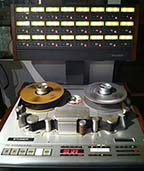Analog mastering has undergone significant changes in the past three decades, reflecting broader trends in technology, music production, and consumer preferences. While the fundamental principles of mastering remain rooted in enhancing sound quality and ensuring a cohesive listening experience, the tools, techniques, and attitudes surrounding analog mastering have evolved dramatically. This article explores these changes, delving into the technological advancements, the resurgence of vinyl, and the ongoing appeal of analog sound.
In the early 1990s, analog mastering was characterized by a more traditional approach. Engineers relied heavily on physical media, such as magnetic tape and vinyl records, to produce masters. The primary tools in the mastering suite included high-quality analog tape machines, equalizers, compressors, and limiters. The process was highly manual and labor-intensive, requiring skilled engineers to make decisions based on their auditory experience and knowledge of how audio translated across different playback systems.
One of the defining features of analog mastering during this period was the aesthetic quality of the sound. Engineers often aimed for a warmth and richness that characterized analog recordings, utilizing techniques such as tape saturation and analog compression to achieve the desired sonic signature. The imperfections inherent in analog equipment were embraced as part of the charm, giving music a sense of character and authenticity. This period also saw the rise of major studios that specialized in analog mastering, fostering a culture of craftsmanship and artistry in the process.
As the 1990s progressed, digital technology began to make its presence felt in the mastering world. While many studios still relied on analog equipment, the introduction of digital audio workstations (DAWs) offered new possibilities for editing and processing. However, for purists, the digital realm was often viewed with skepticism. There was a belief that digital mastering could not replicate the warmth and depth of analog sound, leading to a bifurcation between those who embraced digital technology and those who remained steadfastly loyal to analog methods.
By the late 1990s, some mastering engineers began experimenting with hybrid setups, combining analog and digital tools. This approach allowed engineers to harness the strengths of both worlds, using analog equipment to impart warmth and character while leveraging digital technology for precision and flexibility. For instance, an engineer might record an analog master onto tape before transferring it to a digital format for further manipulation. This blend of techniques became increasingly popular as engineers sought to find a balance between the rich tones of analog and the accuracy of digital processing.
The turn of the millennium marked a pivotal moment in the evolution of analog mastering. The explosion of the internet and the rise of MP3s fundamentally changed how music was consumed. With the proliferation of digital distribution, the industry began to shift its focus toward digital mastering, as consumers increasingly favored convenience and portability over the tangible qualities of vinyl and tape. While many established mastering engineers continued to work with analog equipment, a new generation of engineers emerged, often trained in digital environments and familiar with the latest software.
Despite the growing dominance of digital mastering, there was a notable resurgence in vinyl records during the early 2000s. This revival prompted a renewed interest in analog mastering techniques. Many consumers began to seek out the warmth and depth that vinyl offered, and mastering engineers adapted their methods to cater to this growing market. As vinyl sales climbed, the demand for high-quality analog mastering services increased, leading to a resurgence of studios dedicated to this craft.
As vinyl regained popularity, engineers began to revisit traditional mastering techniques that had been sidelined in the digital era. They rediscovered the art of cutting records, using classic cutting lathes to create masters that would yield high-quality vinyl pressings. This process involved carefully considering factors such as groove spacing, playback limitations, and dynamic range. Engineers had to ensure that the music would translate well to vinyl, taking into account the unique physical constraints of the medium. This heightened focus on the specifics of vinyl mastering reintroduced a level of craftsmanship that echoed the early days of the recording industry.
In the last decade, the tools available for analog mastering have also evolved. While many engineers still use classic analog equipment, there has been a resurgence in the development of new analog gear that blends vintage characteristics with modern technology. Companies have created high-quality analog compressors, equalizers, and tape emulators that offer the warmth of analog sound while incorporating the precision and reliability demanded by today’s engineers. This new wave of analog equipment has allowed mastering engineers to achieve desirable sonic qualities while maintaining efficiency and consistency in their workflows.
Moreover, the integration of analog and digital processes has become increasingly sophisticated. Many mastering engineers now employ a hybrid approach that allows for seamless transitions between analog and digital formats. For instance, an engineer might start with an analog signal chain, utilizing vintage gear to impart warmth and character before transferring the audio into a DAW for additional processing. This methodology preserves the best qualities of both analog and digital technologies, ensuring that the final product retains the emotional depth associated with analog while benefiting from the precision of digital editing.
Another notable trend in analog mastering over the past three decades has been the democratization of the process. With the rise of home recording and affordable studio equipment, more artists and independent labels have sought out professional mastering services. This shift has led to a greater emphasis on accessibility and affordability, as well as the emergence of new mastering studios that cater specifically to independent musicians. Many of these studios focus on analog mastering techniques, offering artists the opportunity to achieve high-quality sound without the expense associated with larger commercial facilities.
Furthermore, the evolving landscape of music consumption has influenced the approach to analog mastering. As streaming platforms dominate the industry, mastering engineers must now consider how their work will translate across a multitude of devices, from high-end audio systems to earbuds. This requirement has led to the development of new mastering practices that prioritize clarity and impact in various listening environments. While this trend has generally favored digital mastering, many analog engineers have adapted their techniques to ensure that the warmth and character of their work translate well in the digital age.
The resurgence of interest in analog sound has also been accompanied by a cultural shift. Many artists and listeners have begun to value the aesthetic qualities of analog recordings, associating them with authenticity and nostalgia. This cultural appreciation has influenced a generation of musicians, leading them to seek out analog mastering services to capture the essence of their sound. For many, the choice of analog mastering is a statement about their artistic vision and the emotional connection they want to establish with their audience.
In summary, analog mastering has experienced significant changes over the past three decades, adapting to technological advancements, shifts in consumer preferences, and the evolving landscape of the music industry. From the traditional practices of the early 1990s to the hybrid approaches of today, mastering engineers have navigated a complex terrain that balances the rich, warm qualities of analog sound with the precision and efficiency of digital technology.
As the demand for high-quality analog mastering continues to grow alongside the resurgence of vinyl, mastering engineers are likely to remain at the forefront of this evolution. The craftsmanship and artistry inherent in analog mastering will continue to play a vital role in shaping the sound of music for years to come. The interplay between analog and digital technologies, as well as the cultural appreciation for analog sound, will ensure that this dynamic field remains vibrant and relevant in an ever-changing musical landscape.



Comments are closed.